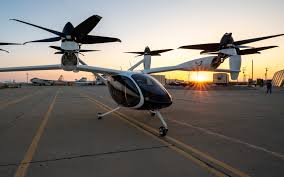Rwanda's Flying Taxis: A Leap into Advanced Air Mobility

Rwanda recently made history by hosting Africa’s first public flight of a self-flying (pilotless) electric air taxi. The vehicle is the EHang EH216-S, an electric vertical takeoff and landing (eVTOL) aircraft developed by the Chinese company EHang, in partnership with China Road and Bridge Corporation (CRBC) and the Rwandan government.
The first public demo took place during the Aviation Africa Summit in Kigali on . This fully electric, autonomous two-seater can carry up to 220 kg. It uses 16 propellers, cruises between 100–130 km/h, and has a range of about 30–35 km with a flight time of roughly 20–25 minutes per charge.
Rwanda’s earlier success with drone delivery (like Zipline) paved the way for regulations, public acceptance, and infrastructure, making the air taxi project feasible. This demo is not just about flying—it’s a step towards building the regulatory, safety, and operational systems for a new era of advanced air mobility.
Strengths
- Strong government support with bold public investment.
- Regulatory openness, leveraging experience from drone logistics.
- Strategic partnerships with EHang & CRBC for technology and expertise.
- Kigali's compact layout suits short-distance flights like tourism and emergency response.
Weaknesses
- High infrastructure and maintenance costs.
- Range and flight time limitations (20-25 minutes).
- Safety, reliability, and public trust concerns for pilotless vehicles.
- Energy infrastructure needs to be sustainable and robust.
- Affordability challenges for most citizens without subsidies.
Opportunities
- Position Rwanda as Africa's hub for Advanced Air Mobility innovation.
- Boost local industries like tech, aviation safety, and manufacturing.
- Use cases: emergency response, tourism, medical evacuation, cargo delivery.
- Integration with smart city transport and urban planning.
Threats
- Regulatory and legal hurdles (liability, insurance, certification).
- Negative public perception due to safety concerns.
- Dependence on imported technology and supply chains.
- Competition from more mature international systems.
- Regulation & Safety First: Develop legal frameworks for airworthiness certification, flight corridors, and emergency protocols.
- Infrastructure Development: Build vertiports, charging stations, and emergency landing zones powered by renewable energy.
- Local Capacity: Train local engineers and establish service centers for maintenance and spare parts.
- Economic Models: Start with premium services, then scale to public transportation options.
- Public Engagement: Build trust through transparent communication and phased rollout with cargo or medical flights first.
- Sustainable Energy: Ensure charging infrastructure uses clean, renewable power.
- Regional Integration: Harmonize standards across African countries through AfCFTA to support a continental market.
Rwanda should avoid treating the project as mere prestige. Instead, prioritize real services like medical evacuation and emergency response to demonstrate early benefits. Partnerships with academia, government, and international firms are essential for knowledge transfer and local capacity building.
Affordability must remain a key focus—integrating services into public transport systems and exploring subsidies will ensure equitable access. The project should also serve as a launchpad for local industries, including battery tech, avionics, and AI-driven autonomy.
Finally, Rwanda should monitor environmental impact closely, ensuring eVTOLs remain sustainable beyond being just "electric" in name.
